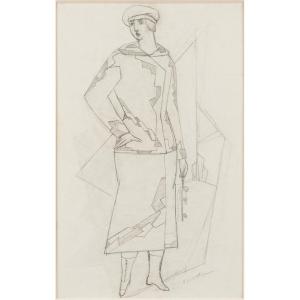with the frame: 66.5 x 85 cm
Ludwig Klimek was born in 1912 in Skoczów (Austria-Hungary, now in Poland). He studied at the Academy of Fine Arts in his hometown. He left Poland for France, arriving in Paris in March 1939 and working in André Lhote's studio and at the Académie de la Grande Chaumière. His friend Édouard Vuillard got him a scholarship from the Foreign Affairs. He admired the works of the great painters and quickly began a career in what is commonly called the New School of Paris, in reference to these artists who combined figuration and abstraction in the years surrounding the Second World War. In Klimek's work, however, the most abstract pictorial expressions would only be the subject of a brief interlude in the 1960s. Like many artists fascinated by southern light and colours, Ludwik Klimek moved to the South of France some time after his arrival in France. He settled for the first time in Aix-en-Provence with his wife, joined the resistance in Savoie in 1943, returned to Paris at the Liberation before settling permanently in the South-East in 1947. First in Nice, then Menton for twenty years, before Saint-Paul-de-Vence, Juan-les-Pins and, finally, Antibes where he died in 1992.































 Le Magazine de PROANTIC
Le Magazine de PROANTIC TRÉSORS Magazine
TRÉSORS Magazine Rivista Artiquariato
Rivista Artiquariato